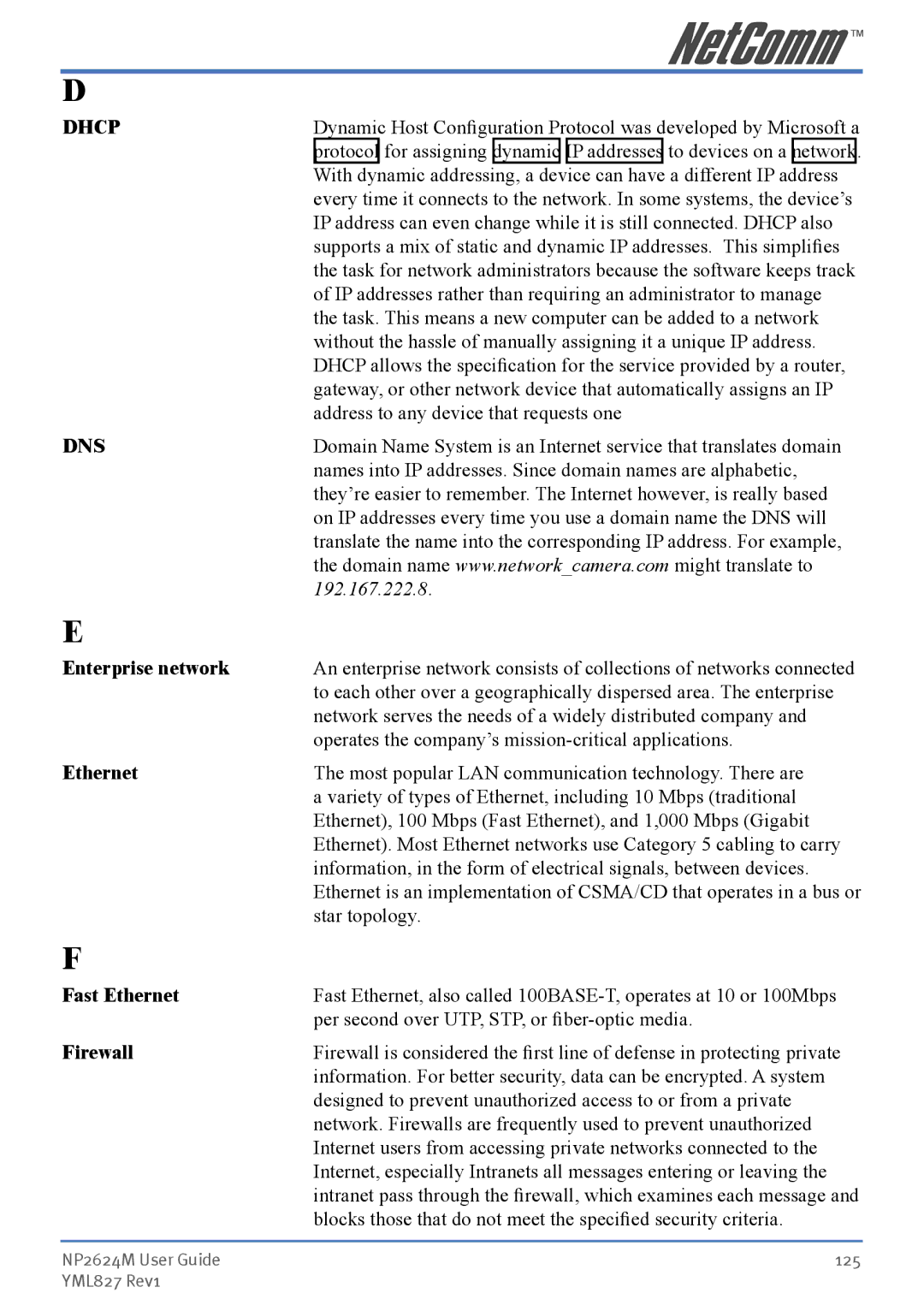
D
DHCP | Dynamic Host Configuration Protocol was developed by Microsoft a |
| protocol for assigning dynamic IP addresses to devices on a network. |
| With dynamic addressing, a device can have a different IP address |
| every time it connects to the network. In some systems, the device’s |
| IP address can even change while it is still connected. DHCP also |
| supports a mix of static and dynamic IP addresses. This simplifies |
| the task for network administrators because the software keeps track |
| of IP addresses rather than requiring an administrator to manage |
| the task. This means a new computer can be added to a network |
| without the hassle of manually assigning it a unique IP address. |
| DHCP allows the specification for the service provided by a router, |
| gateway, or other network device that automatically assigns an IP |
| address to any device that requests one |
DNS | Domain Name System is an Internet service that translates domain |
| names into IP addresses. Since domain names are alphabetic, |
| they’re easier to remember. The Internet however, is really based |
| on IP addresses every time you use a domain name the DNS will |
| translate the name into the corresponding IP address. For example, |
| the domain name www.network_camera.com might translate to |
| 192.167.222.8. |
E
Enterprise network | An enterprise network consists of collections of networks connected |
| to each other over a geographically dispersed area. The enterprise |
| network serves the needs of a widely distributed company and |
| operates the company’s |
Ethernet | The most popular LAN communication technology. There are |
| a variety of types of Ethernet, including 10 Mbps (traditional |
| Ethernet), 100 Mbps (Fast Ethernet), and 1,000 Mbps (Gigabit |
| Ethernet). Most Ethernet networks use Category 5 cabling to carry |
| information, in the form of electrical signals, between devices. |
| Ethernet is an implementation of CSMA/CD that operates in a bus or |
| star topology. |
F
Fast Ethernet | Fast Ethernet, also called |
| per second over UTP, STP, or |
Firewall | Firewall is considered the first line of defense in protecting private |
| information. For better security, data can be encrypted. A system |
| designed to prevent unauthorized access to or from a private |
| network. Firewalls are frequently used to prevent unauthorized |
| Internet users from accessing private networks connected to the |
| Internet, especially Intranets all messages entering or leaving the |
| intranet pass through the firewall, which examines each message and |
| blocks those that do not meet the specified security criteria. |
NP2624M User Guide | 125 |
YML827 Rev1 |
|
